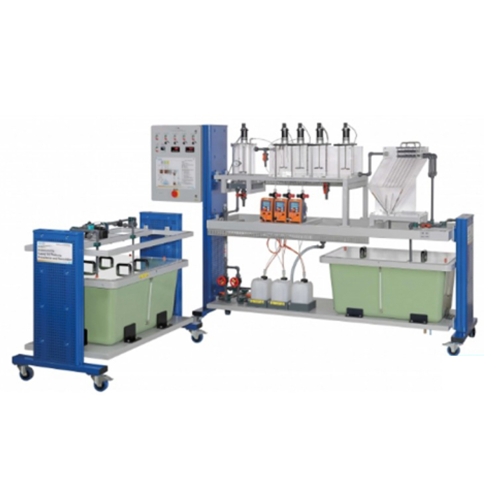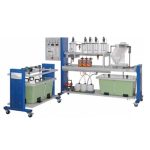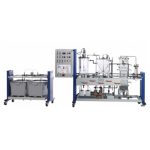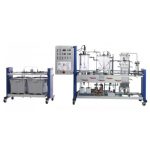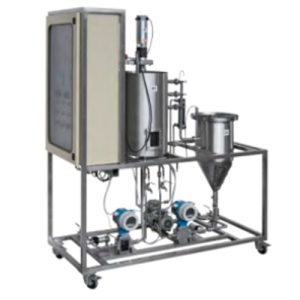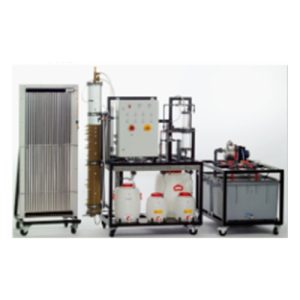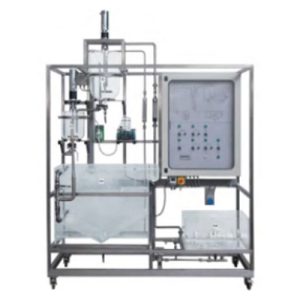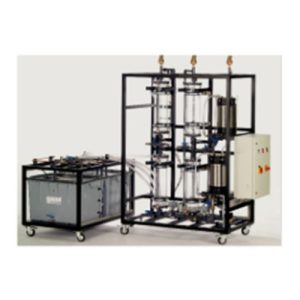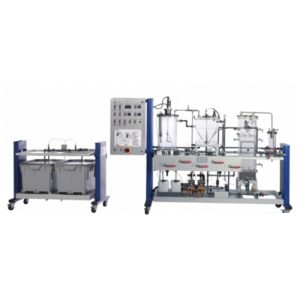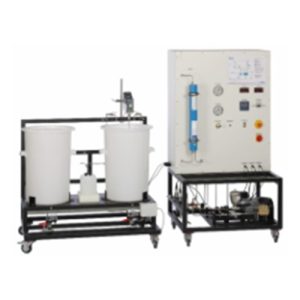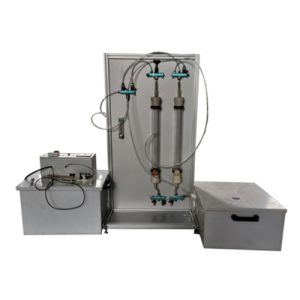Precipitation and Flocculation Didactic Equipment Fluid Mechanics Lab Equipment
AFW003 Precipitation and Flocculation Didactic Equipment Fluid Mechanics Lab Equipment For Vocational Training Center, Technical Institution, Engineering University, TVET Schools.
- Description
- Inquiry
Description
AFW003 Precipitation and Flocculation Didactic Equipment Fluid Mechanics Lab Equipment
Description
The demonstrates the removal of dissolved substances by precipitation and flocculation with subsequent sedimentation.
First, raw water is produced in a tank to contain dissolved metal (e.g. iron). A pump transports the raw water to the precipitation tank. Here the precipitant is added (e.g. caustic soda). Due to the reaction of the dissolved metal ions with the precipitant, insoluble metal hydroxides form (solids). From here the water flows into a flocculation tank divided into three chambers.
The purpose of flocculation is to improve the sedimentation properties of the solids. By adding a coagulant in the first chamber the repulsive forces between the solid particles are cancelled out. The solid particles aggregate into flocs (coagulation). To generate larger flocs, a flocculant is then added (flocculation). In the third chamber low flow velocities are present to prevent any turbulence. Turbulence would impede the formation of flocs. The now well sedimentable flocs are then separated from the treated water in a lamella separator. The treated water and the sedimented flocs (sludge) are collected in two tanks.
Flow rate, temperature and the pH value are measured. In addition, the pH value in the precipitation tank can be controlled. For measuring the conductivity an external meter is available. Samples can be taken at all relevant points. The cover of the tank is transparent for the inspection of the treated water.
Analysis technology is required to analyse the experiments. The choice of analysis technology depends on the substances used. Trivalent metallic salts are usually well suited as coagulants. Common flocculants are organic polymers.

